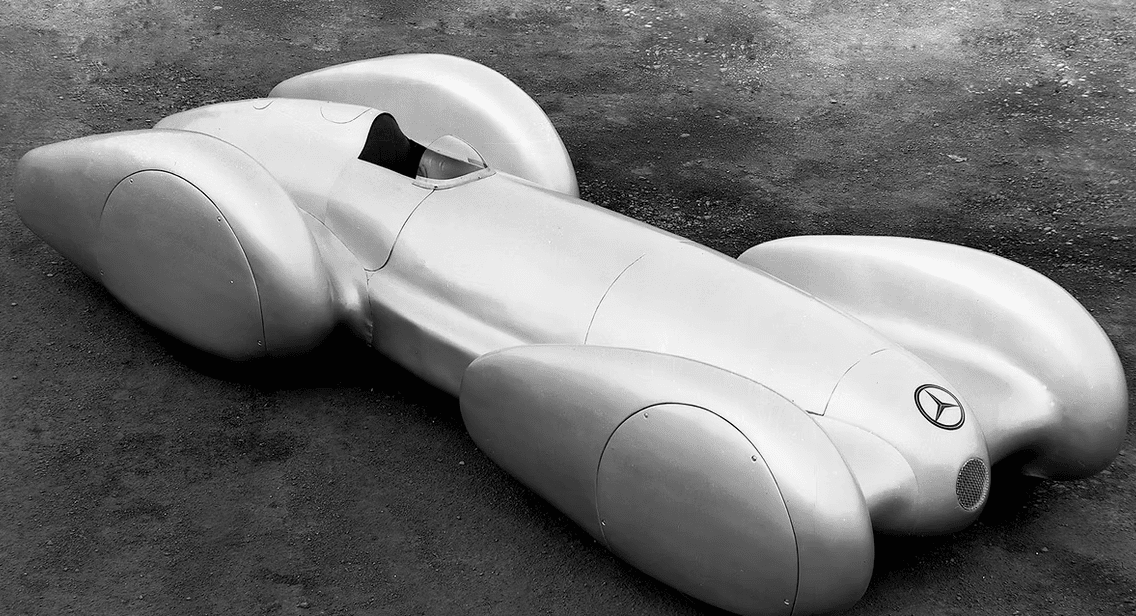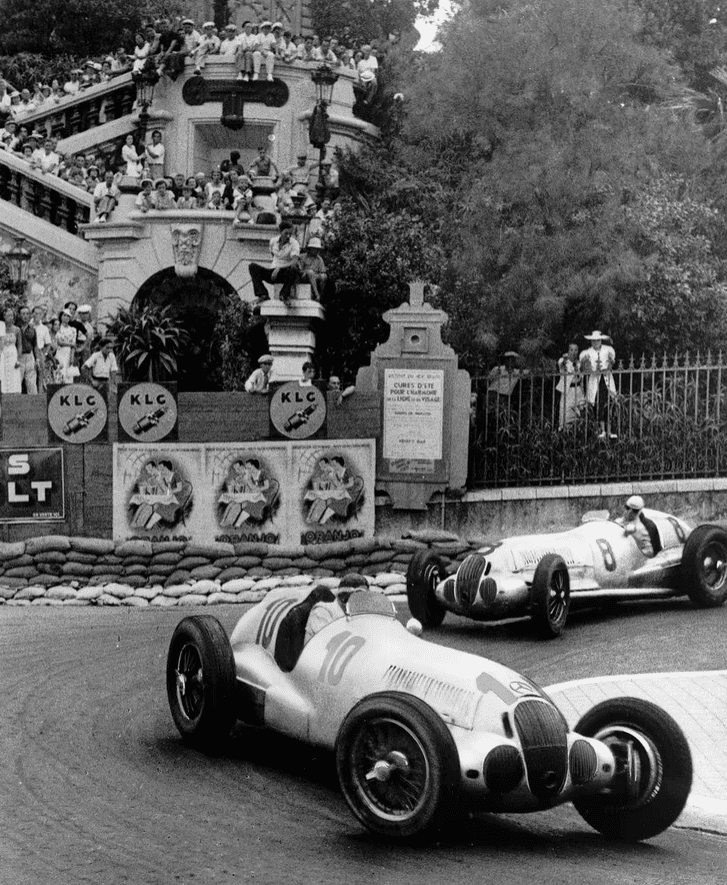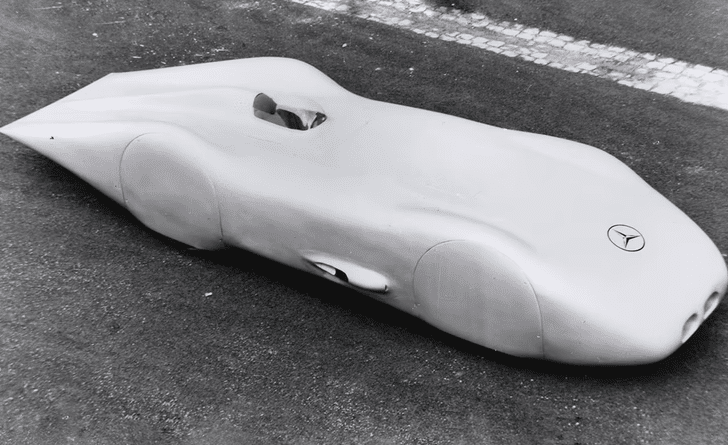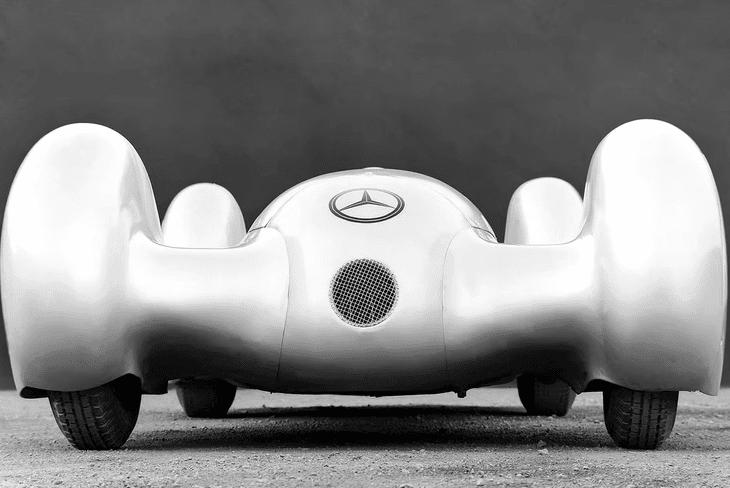When you think of cars that can go over 271 miles per hour, only a handful come to your mind.
Obviously, the Bugatti Chiron is on the top of your list with the Hennessy Venom GT joining the French car as well, and the Koenigsegg Agera RS, Jesko, and One : 1 follow in suit. You look down at your list and notice that only five cars have been named, you might be surprised about that because of how far technology and cars have evolved over the decades you would expect more to be on the list, but maybe not much has really changed? The 1930s was an era filled with tests and trials in every aspect, the automobile was still a relatively new invention in the world, and was still considered as a toy for the rich. Cars had around 80bhp, a flexible and thin body that would deal with those horrendous dirt roads, elongated and exaggerated lines, and they were usually fitted with a supercharger and were pulled around on thin tires. What an era to be alive in…. not really. Although the car industry in the 1930s wasn’t as bad as you expected it to be, nonetheless, without those cars and all those failures and all those innovations, we wouldn’t have the companies and cars we love today.
100 horsepower in the 1930s was absolutely bewildering, you were called crazy if you were able to handle and thrash those stripped-down, dangerous cars around a track, only some of the most ballsy and insane drivers were up to that task. And luckily those drivers created records and drove legendary drivers we remember to this day. Going 95mph and sliding sideways in a Bugatti Type 35 knocked your socks off, now imagine going 271 miles per hour in a car like that. You read that right, 271 miles per hour in the 1930s. Only five hypercars can go over 270 miles per hour, let alone a car from the 1930s. Once wheels and an engine were attached to a carriage, humans have wanted to go faster and faster and have itched endlessly for more speed and power. And in a decade where new innovations and ideas were being tested, it wasn’t a surprise that no other than Mercedes wanted to achieve the unachievable.
Manfred von Brauchitsch and Rudy Caracciola at the 1937 Monaco GP, held that year on 8 August both the W154 and the W125 were going around the Loews Hairpin. (unattributed)
We cant mention these cars without mentioning the dark history behind them, that they were directly funded by the German government, which was ruled by Hitler and the Nazi party. The Nazi party and Hitler were a big part of propaganda in Germany and machine propaganda. Meaning they would try to create some of the fastest cars and race in the world, like the Auto Union Grand Prix cars because they wanted to seem superior. The achievements of Mercedes and Auto Union were increbible in the 1930s, but it will forever be overshadowed by the evil and vile significance behind those cars. The land speed record was really just to promote their new public road, the Autobahn, and those cars were not made quick just to break a speed record, but to make Nazi Germany look superior to others.
The German manufacture at the time was soaring to all different heights and achievements in motorsport, the W25 and W125 could not stop takes wins throughout Grand Prix events, and that was just the start of the surprises. Mercedes dominated in the 30s, 50s, and still do the same today in Formula 1, but that legacy and domination we all are familiar with started in the pre-war era. We always hear about how Ferrari changed the entire game for racing and how without the Porsche 911 we wouldn’t have been the same, or how Bugatti has always broken and set records since the 20s all the way to today. But we don’t really talk about how much Mercedes has truly flipped the automotive world on its back and upright again, including this very significant event in 1939. For the 1938 Grand Prix season, the Association Internationale des Automobile Clubs Reconnus announced another rule change that decreased and limited the displacement size of supercharged engines to 3.0L and naturally aspirated engines to 4.5L, all manufacturers were getting ready to adjust their engines just in time for the season, except for one company, Mercedes. Instead of modifying and evolving their already existing W125 race car with its supercharged 5.6L straight-eight engine, Mercedes-Benz felt like building an entirely new race car for the 1938 season.
The designed Rudolf Uhlenhaut, Max Sailer, and Max Wagner designed Mercedes W154 was a front-engined race car solely made for Grand Prix racing, its chassis and body was relatively the same as its predecessor but instead of the “mere” 5.6 liter Straight-8 supercharged, the long hooded W154 had a brand new V12 engine called the M154. Mercedes strayed away from the inline configuration and plopped in a beastly 12-cylinder engine that was heavily inspired by the 5.5L DAB V-12 engine that was meant for the W125, but was never used during the 1936 season. Remember this V12 engine, because it plays a massive role in a certain top speed record.
Later on, Mercedes built and designed the most streamlined car you might ever see, it was a streamlined version of the W125. The designed by hand and pencil Mercedes had an elongated and pinched in rear end, the tail would come to a point for the finest aerodynamics and airflow. The front end was rounded out and the entire body looked like the bar of soap you have in your bathroom. All the lines flowed together in unison, there was nothing on this car that created drag, the wheelhouses were made practically invisible with the extensive fairings and skirts that covered the suspension, and cockpit sides, this car cut through the air like a bullet, and it definitely went like one as well.
To create such a crazy car they needed a “crazy driver” willing to drive it. Rudolf Caracciola was a German racing driver who still stands today as one of the best drivers to have ever existed. Known mostly for taming and winning in 600bhp Auto Unions in treacherous rainy conditions, Caracciola also won the European Drivers’ Championship which is equivalent to the modern Formula One World Championship. Mercedes was looking for the ultimate driver to bring this to this world-breaking record, and Rudolf was the man to do it. The Streamlined W125 left everyone with their jaws open and hairs standing on end as Rudolf Caracciola stepped into the sleek Mercedes and secured a speed record of 268.863 mph. People thought flying pigs was even more realistic than going 268 miles per hour, but when Mercedes put their mind to something, they do it, and they didn’t just stop there… The fairly new German automaker founded in 1926 wanted more, and they lusted after an even higher top speed, they could have just stopped there, but they knew they could accomplish more. And to accomplish the unthinkable, Mercedes-Benz took even more extreme measures.
Chassis number 11 of the 15 W154s built was modified and evolved to become the fastest car in the entire world, they achieved this incredible feat by enclosing the wheels and suspension in the slippery aerodynamic skirts and fairings. Everything, including the side of the cockpit, was enclosed in panels to reduce as much drag as possible and to be able to hit the highest plausible top speed. The engineers and designers stripped down the center and middle of the car, sculpting a shape that was like a cigar. The Fenders were kept in place and the bulbous wheel arches surround the middle of the car that is practically shaped as a Grand Prix race car. The two-cylinder banks of the M154 V12 engine were set at 60 degrees and dominated the front end of the car. The cockpit resembles current Formula 1 cockpits, Rudolf would have to squeeze himself in the compact cockpit, that was designed for the utmost aerodynamics. Every bank consisted of two three-cylinder blocks made of steel, not the lightest metal, but one of the strongest. The front-mounted engine used side-by-side connecting rods and a one-piece crankshaft, as the air was sucked into the engine by a carburetor that was attached to two superchargers at the front of the monstrous V12 motor.
Nothing on this car wasn’t streamlined, the German company did all they could to make it as aerodynamic as they possibly could. It was an uncompromised car, whatever they didn’t need was taken off or wasn’t on the car in the first place, lightness and sleek design was the key to this car’s record-breaking top speed. I know you are getting impatient, and you’re on the edge of your seat waiting to know what happens next, but be patient, there is still much more to this car than just its record. They removed every little thing on this car, you can say they left a steering wheel, a gearbox, an engine, four tires, a chassis, and the body, but all those components that were removed played a massive part in reducing the car’s weight to 2,092 lb (949 kg). And since the runs were short and brief, the radiator was removed as well, and an ice tank was installed above the rear axle to be able to cool the extreme heat coming from the drum brakes. Speaking of the brakes and wheels, to go over 270 miles per hour in supercars today needs specially made tires to do that. When the Bugatti Chiron Super Sport 300+ broke and surpassed the 300mph barrier in 2019 one-off tires had to be specifically made for that day.
Why? Well, when you are going over 300 miles per hour, the tires are not only at immense strain, but they are holding up a 4,044 lbs hypercar that is being pushed into the ground from all the downforce, while also fighting against the heavy air coming towards it. No regular supercar tires would be able to bring the Bugatti Chiron to 300mph, that’s why tires are so important because when you have the right set that can sustain all the pressure it can not only gain you seconds but bring you to speeds that will soil your pants. And you have to realize that was in 2019, we are talking about the 1930s here, and let’s just say tires in the 1930s were far from good… Tires did not grip back then, and they were extremely thin and fragile. Therefore, to go from 0 to 271mph back to 0 on tires from the 30s is maniacal and mental. The question of how was the one-of-one W154 able to pull off those speeds with those tires? Or what tires were used on the W154 that day is a question that isn’t answered.
In February 1939, Rudolf Caracciola stepped into the elongated and streamlined W154, willing to do whatever it takes to bring this car to a speed record that would last for decades. Caracciola was hidden behind the tight cockpit and set off onto the Autobahn with a mixed feeling of anxiousness and adrenaline. The acclaimed Mercedes driver stopped on the throttle pedal and the silver arrow went zooming and rocking across the long stretch of road. Shaped like an arrow and looking like an arrow, you could see the dune-shaped fenders from a mile away. The car shook and rattled, no one knows the emotions Rudolf felt in that car at that moment, to go at such high speeds with a car that has no downforce whatsoever must have felt like your life flashing before your eyes.
And flashing before people’s eyes was a mind-boggling speed of 271 miles per hour. 271 miles per hour in 1939… the significance behind the record is absolutely evil and is associated with some of the vilest regimes in history, but the car itself attained the highest speed on a public highway, that toom 70 years to finally beat.





